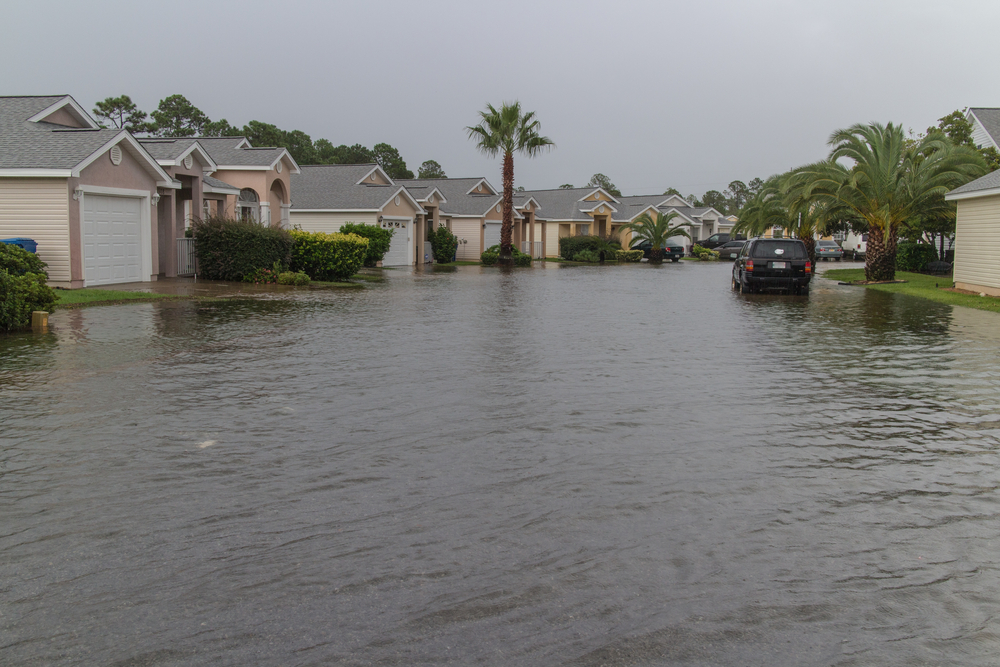It has been another chaotic year for the property insurance market. Many investors and homeowners have recently experienced required increases to insurance value, premium increases, or both. The last few years have been challenging, and a continuously hardening property market has not helped. It is increasingly important that as an insurance agent, you are advising investor clients on ways to control costs while maintaining adequate coverage.
Before we turn our attention to 2023, let’s look at the insured loss events of 2022, how it impacts the market, and what we can learn from it all.
Extreme weather events
2022 was another active season for weather events in the United States. According to Climate.gov, the U.S. experienced 18 separate weather events costing $1 billion or more. That places 2022 in a tie with 2017 and 2011 for the third-highest number of billion-dollar disasters in one year. Similar to last year, 2022 weather events were diverse.
Winter
The year started with Winter Storm Izzy severely affecting the Southeast. The high winds, freezing temperatures, snow, and ice left more than 100,000 homes without power.
Large hail and strong wind gusts targeted Texas in late February, causing significant damage to roofs. Total losses exceeding $1 billion were reported in multiple counties. Texas Governor Greg Abbott said the storm was one of the most significant icing events they’ve had in at least several decades.
Tornadoes were not much of a headline in the first couple of months. January saw 37, and February saw 11 confirmed; both are relatively normal numbers compared to previous years. However, as the transition to spring began, we saw a major increase.
Spring
March typically averages 80 tornadoes each year in the U.S. By the end of the month in 2022, a whopping 234 were confirmed. Most of these emerged in the South and Southeast region, with 179 reported in just a week. On April 5, an EF4 tornado touched down in Georgia, injuring 12 people and destroying multiple neighborhoods.
Research compiled by National Geographic indicates that there have been fewer days in a calendar year with at least one tornado but more days with over thirty. In other words, tornado events are becoming more clustered. Evidence suggests that tornado patterns have shifted geographically. The number of tornadoes in the states that make up Tornado Alley continues to fall. Although, tornado events are on the rise in Mississippi, Alabama, Arkansas, Missouri, Illinois, Indiana, Tennessee, and Kentucky.
Wildfires and drought took over the Western and Central U.S. for most of the spring, summer, and fall. The National Interagency Fire Center reported that 7,577,183 acres were burned because of wildfire in 2022. Although this seems like a large number, and it is, this is considered an average season right now.
Summer
Extreme heat and drought severely impacted Western and Southern Plains states. Large reservoirs in these areas have been depleted. Climate.gov reports that the United States’ largest reservoir, Lake Mead, is nearing dead pool status. The water level is the lowest it has been since it was filled in the 1930s. This drought was one of the costliest in U.S. history- around $22.2 billion. The extreme heat caused over 100 heat-related fatalities across Arizona, Nevada, California, Oregon, and Texas.
Towards the end of July, Kentucky, Missouri, and Illinois experienced intense rainfall that led to severe flooding. The National Weather Service reported rainfall in Kentucky was over four inches an hour at one point. In Missouri, 7.68 inches of rain fell in just six hours.
Fall
We can’t discuss 2022’s extreme weather without acknowledging Hurricane Ian. On September 28, the Category 4 hurricane made landfall just south of Punta Gorda, Florida. 150 mph winds and over 20 inches of rainfall resulted in significant inland flooding and property damage. Hurricane Ian is the third costliest tropical cyclone, causing $113.1 billion in damage. According to the Florida Department of Law Enforcement, the death toll is currently 145. Hurricane Nicole crossed the same region in Florida six weeks later, causing an estimated $1.6 billion in damage.
Winter
Winter Storm Elliott brought dangerous weather conditions in late December. Much of the U.S. experienced strong winds, brutally cold temperatures, and blizzard conditions. The storm caused significant damage, mainly burst pipes, and losses were estimated at $5.4 billion. Around 50 inches of snow fell in Buffalo, leaving many stranded and first responders unable to help.
How is the insurance market reacting?
The extreme weather events of 2022, Hurricanes Ian and Nicole especially, caused a significant shift in the insurance market. Many carriers in Florida have suspended writing new business to assess their financial situations and ability to stay afloat. Unfortunately, this also means that substantial rate increases are imminent in Florida as carriers attempt to keep pace with the costly number of insurance losses.
Although Hurricane Ian missed Louisiana, carriers are still feeling the impact of the 2020 and 2021 hurricanes. Most properties in Louisiana have the potential to experience significantly expensive losses, making it difficult for carriers to maintain a healthy book of business. Many insurers have defaulted or withdrawn from the state, either by canceling existing policies or announcing they will not renew them.
Other parts of the country are also starting to see changes in property insurance. Rates and losses are being evaluated across the board due to the increased severity of tornadoes, floods, and other inclement weather. We will likely see stricter underwriting guidelines, especially in Florida and Louisiana. Some carriers attempting to remain in markets like these may also increase standard deductibles to offset their risk.
The cost of labor and materials is also affecting insurance carriers. Although prices have somewhat stabilized, materials and labor remain more expensive now than before the pandemic. Property owners are experiencing costlier losses, and insurers are experiencing costlier claims.
What can investors take from this?
Increased deductibles and streamlined coverage amounts provide more bang for your buck: Increasing the property deductible from $1,000 to $5,000 could save investors up to 25%. For investors to get a good idea of a comfortable deductible amount, they’ll want to consider the minimum claim they would turn in, then do as much as double it. Before making any change, advise your clients that an increase in deductible may require them to manage repairs out of pocket in the event of a loss.
Limiting overages on coverage amounts is another way investors can save money month-to-month. Most insurance agencies provide a round number to ensure the right amount of coverage, which isn’t the worst strategy. But if the coverage amount is $50-100K more than the investor would need, they may be wasting money. Reviewing the coverage amounts needed to properly insure properties could help investors save money in a hard property market.
Keeping up with property maintenance can save investors time and money: All tenants should be aware of their maintenance responsibilities. Investors should specify in the lease what tenants are and are not allowed to do at the property. The lease should also state who has what responsibilities when it comes to property maintenance. At the bare minimum, tenants should contact the property owner/manager if they see any hazardous conditions. Tenants should have contact information for the property owner/manager or an easy way to submit maintenance requests. With that stated, maintenance requests should be reviewed quickly. The sooner issues are dealt with, the less likely they are to worsen and cost investors more time and money. Performing regular property reviews will give investors a general idea of the condition of the property.
Know what is covered: It is strongly recommended that investors read and understand their insurance policy. In the event of a loss, investors will want to know what parts of the property are or are not covered and what types of losses are or are not covered. If you and your investor client don’t understand the coverage or have any questions, don’t hesitate to contact your Sales Manager!
Mitigation tips for 2022’s biggest insured losses
Hurricanes
- Understand chosen coverage
- Not all policies cover Named Storm or Storm Surge losses. Understanding what is covered at the property is very important. Investors should not wait to find out at the time of a loss.
- Consider Flood coverage
- Although high winds caused significant damage to properties, a large portion of Hurricane Ian losses were due to storm surge, which falls under Flood coverage. It is a common misconception that because the loss occurred during the hurricane, it is part of the hurricane’s damage. However, once the rainwater touches the ground and finds its way into the home, it is considered storm surge damage. Conversely, if water enters the home through a storm-created opening, such as high winds blowing the roof off, that water damage is considered part of the hurricane damage.
- Cleanup and assistance
- After the hurricane has passed, investors may want to safely clean up the property and repair some of the damage. Investors should contact their insurance company to file any claims. If your investor client does not have proper coverage, they may contact the state to determine if government assistance is available.
Water losses
- Preventing frozen pipes
- Frozen pipes that burst can cause damage to walls, cabinets, flooring, and personal items, making the home uninhabitable. There are a few things investors can do to limit the possibility of frozen pipes:
- Maintain heat at the property- keep the thermostat at 55 degrees or higher.
- Ensure there is proper insulation in the walls and on the related plumbing. For properties that are under renovation or vacant- winterize or drain the water lines.
- If a loss does occur, turn off the water and mitigate it as quickly as possible. Your investor clients should take photographs (if their mitigation contractor doesn’t) and file the claim quickly. Even after the plumbing has been repaired, the damaged pipe should be kept for an insurance adjuster to review.
- Keep in mind, frozen pipes are considered a water loss. If your investor client has Basic Form coverage, this loss would not be covered.
- Learn more about burst pipes and what investors can do to mitigate here.
- Frozen pipes that burst can cause damage to walls, cabinets, flooring, and personal items, making the home uninhabitable. There are a few things investors can do to limit the possibility of frozen pipes:
- Quick action after any water-related loss is one of the most cost-effective ways to limit the expenses tied to repairs. Examples include water damage from hurricanes, floods, heavy rain, ice damming, frozen pipes, failed water lines, and sewer/drain backup.
Tornadoes
- Regularly check the condition of the roof
- Investors should identify parts of the roof or exterior that could use repairs and fix them. Look out for nail pops, broken or worn-out shingles, and wood rot. It may be that just a few shingles that are curling, buckling, or cracking, need replaced. But if there is a lot of damage, it may be time for a new roof! The flashing around skylights, pipes, and chimneys for gaps or leaks should also be looked at.
- Perform routine tree maintenance
- Trees or large limbs that fall onto the property can cause significant damage. Trees or limbs that hang over the property or lean towards it should be trimmed or cut down. To find an arborist in the area, investors can call TCIA at 800-733-2622 or run a Zip Code Search on www.treecaretips.org. ISA-certified arborists can be found through a search tool at www.isa-arbor.com.
- Tenant safety
- Provide tenants with general safety tips regarding inclement weather.
- When there is inclement weather in the area, investors should suggest that their tenants take cover. Safe rooms, storm shelters, or other potential protective locations within or near the property should be noted. If your investor client has tenant-occupied buildings with long-span roofs, open space plans, or many occupants, they should identify the best available refuge and share those locations with tenants.
- Wind/Hail deductibles
- The applicable deductible for your client’s Wind/Hail coverage could be higher than the All Other Perils deductible. As you and your investor clients may know, tornadoes are more likely to occur in certain parts of the country than in others. Therefore, deductibles in places like Oklahoma, a Tornado Alley state, will be higher than in places like Rhode Island.
2023 is shaping up to be another chaotic year in the property insurance market. However, there are ways you and your investor clients can get creative with property coverage to offset some of the increased costs. Contact your Sales Manager if you have any questions.





